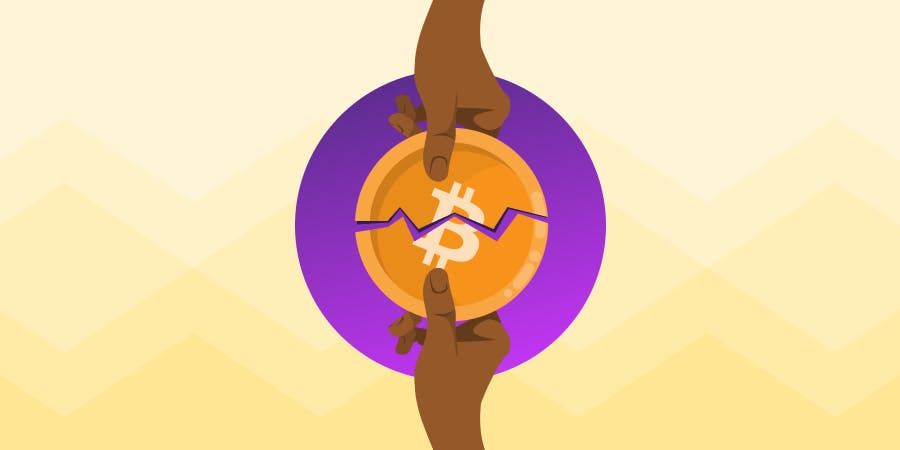Bitcoin Halving: All You Need To Know
Bitcoin is often compared to gold due to its finite nature. A total cap of 21 million bitcoins can ever be mined, and over 18 million are already in circulation.
Bitcoin halving is an in-built feature of its network that slashes the rewards miners receive by half after every 210,000 blocks are mined. This is a powerful mechanism to control the new supply of Bitcoin. At Bitcoin's inception, miners were rewarded with 50 BTC per block. This reward has since seen three halvings, bringing it down to 6.25 BTC as of May 2020.
The halving usually occurs every four years, and the limited supply usually leads to an increase in demand, which causes a rise in the price of Bitcoin. This event is a significant milestone that merits attention from everyone interested in cryptocurrency.
What is Bitcoin Halving?
Bitcoin Halving is a core function of the Bitcoin network to preserve the cryptocurrency's value. Generally, it occurs after 210,000 blocks have been mined usually every four years or after.
Halving is what makes Bitcoin scarce, and scarcity creates value as long as the demand is stable. November 2012 was the first time Bitcoin halved. The price began to rise shortly after the halving, increasing from $11 to $12 and then rising steadily throughout the year, finally reaching $1,038 exactly a year later. The next halving was anticipated and occurred in July 2016.
That year, bitcoin's price dropped but rose steadily and soared to almost $20,000 in December of 2017. The third halving happened on the 11th of May, 2020. Early that Monday, the price of Bitcoin rose to $9,100 from $8,500 after dropping drastically within minutes from $10,000 to $8,100 the weekend before. Later that day, it dipped to $8,900.
Halving was written into the Bitcoin code by its creator, Satoshi Nakamoto. The halving is done to control the supply. By issuing fewer bitcoins over time, it is more likely that the value of bitcoin will rise. If the coins are created too quickly to demand, basic economics suggests that there would be surplus bitcoins in circulation, and ultimately, their price would fall.
Bitcoin Halving History: 2012 to 2024
Bitcoin's halving events are significant milestones in cryptocurrency, occurring after 210,000 blocks have been mined, usually approximately every four years. Here's an overview:
- 2012 Halving
- Initial blocks rewarded 50 BTC.
- Post-halving reward: 25 BTC
- Notable for being the first reduction in mining rewards
- 2016 Halving
- Preceding reward: 25 BTC
- Reduced to 12.5 BTC after the event
- 2020 Halving
- Mining reward before halving: 12.5 BTC
- Dropped to 6.25 BTC per block
- 2024 Halving (estimated in April)
- Expected to decrease rewards from 6.25 BTC to 3.125 BTC
- This marks the fourth such event in Bitcoin's timeline.
As of the current year, the cryptocurrency market has reacted positively ahead of this event, with Bitcoin reaching new heights beyond its previous peak price in 2021
These halvings are programmed to continue until around the year 2140 when the 21 millionth Bitcoin is mined, and no new Bitcoins will be produced.
Market Projections Following Bitcoin's Halving
Price Anticipation:
Historically, the value of Bitcoin has shown significant volatility around halving events. While some investors may expect the reduced supply to drive prices up, market dynamics are complex and influenced by multiple factors. After the 2016 halving, the price of Bitcoin nearly quadrupled, while it shot up over 80x after the first halving event in 2012.
The halving could lead to heightened attention from institutional investors, who may view the reduced supply growth as an opportunity for long-term investment.
Impact on Miners:
- Profitability Shifts: When the reward for mining Bitcoin transactions is halved, miners might find their operations less profitable. This can lead to a reorganisation within the mining sector, with some miners exiting the industry and surviving miners potentially benefiting from reduced competition.
- Investment in Technology: Miners might invest in more efficient mining technology to maintain profitability post-halving, which can affect operational costs and influence the overall security of the Bitcoin network.
Expert Opinions:
Some crypto proponents like Michael Saylor and Cattie Wood are super bullish on Bitcoin. In her annual "Big Ideas" report, Cattie outlined her stance on why Bitcoin could see a huge run from current trading levels up to $3.8 million. Some others, however, remain cautiously optimistic, expecting a more moderate uptick in value.
The Next Showdown: Bitcoin Halving 2024
Historically, the halving is associated with a rise in Bitcoin's price. The halving is expected to decrease Bitcoin's inflationary rate in the long term as the block rewards are halved and fewer bitcoins are mined.
The anticipation of halving events often leads to considerable speculation and discussion regarding the future value of Bitcoin. However, past performance does not guarantee future results, as the crypto market is volatile.
When all 21 million bitcoins have been mined, the only way to reward miners who keep verifying transactions and running the network would be through transaction fees. However, the last halving of Bitcoin won't happen anytime soon, as it is estimated to happen by 2140, and there could be further innovations and improvements to the system.
Disclaimer: This article is meant to provide general guidance and understanding of cryptocurrency and the Blockchain network. It’s not an exhaustive list and should not be taken as financial advice. Yellow Card Academy is not responsible for your investment decisions.


Crypto scoop
Sign up for our weekly newsletter
Stay informed with the latest updates to buy, sell, and store your crypto on the go.

Download the Yellow Card app
Start trading crypto with ease
Get the Yellow Card app to buy, sell, and store your crypto on the go.


